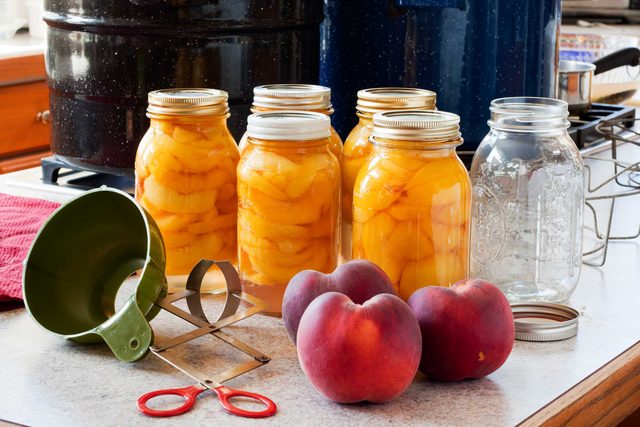How to Preserve Your Summer Fruits
Updated: Nov. 24, 2022
Do you have more fruit than you know what to do with? Try making preserves, jam, or jelly!

You don’t need to be a canning expert to make fruit preserve, you just need to know how to boil and stir. Preserves are basically fruit that is cooked in a thick sugar syrup, and once the preserves are made, they can be stored in the refrigerator for a couple of weeks, frozen for a couple of months, or canned and stored for a couple of years.
What about jam and jelly? Jams and jellies have a thicker consistency than preserves because of pectin, a substance found in most fruits, but often in modest amounts. You can add pectin by stirring in a box of pectin product, which you can find with the canning supplies in supermarkets. For jellies, the pectin is added after the juice has been extracted from the fruit.
Because they have plenty of pectin and sugar, jams and jellies are easy to can in a waterbath canner, which can be any large pot in which the filled and capped hot canning jars can be covered with at least 1 inch of water and held at the simmering point for about 10 minutes. Here are the basic steps:
Step 1: Prepare the fruit using a recipe from any basic cookbook. Citrus rinds, spices, and other flavors can be added to create slightly different taste twists. While the fruit is cooking with sugar, sterilize canning jars and lids in another pot of boiling water. Keep the sterilized jars warm by placing them in a pan in a 250˚ oven.
Step 2: Fill the jars to within ½ inch of the tops with the prepared preserves, jam, or jelly. To make sure jam is ready to put into jars, pour ½ tablespoon of boiling jam onto a plate. Let it cool and slant the plate. If the jam doesn’t slide, it’s ready to be put up. If it slides easily, cook it a bit longer. Hot jelly is easier to put in jars if you pour it into a Pyrex or other heat resistant glass pitcher first.
Step 3: Keep lids and rubber seals in simmering water before putting them on the hot jars. Screw the tops on firmly and place the jars in gently boiling water for 10 minutes. Don’t let hot-packed jars cool before processing in a waterbath canner. Once they lose their heat, they can crack when submerged in hot water.
Step 4: Remove the jars and let them cool. Listen for the telltale pop that lets you know that the jars are sealing. Recheck all jars the day after canning. If there’s a slight depression in the lid and a jar gives off a light “ping” when tapped, it’s firmly sealed. If any processed jars failed to seal, place them in the refrigerator and use the contents within two weeks.
Note: Because of their acidity, properly sterilized fruit preserves rarely become contaminated by bacteria. But to be safe, store them in a basement or other area where temperatures stay between 50˚ and 70˚ F. Before serving check the jar. Discard if the contents seem foamy or discolored, if the lid bulges or is misshaped, or if the rim is leaking. Odd odors, mold, or spurting liquid are also warnings to steer clear.
